Cats are fearless explorers. They climb to the top of objects so they can view the world below. (Sometimes this means your favorite bookcase) They stake out window perches to keep tabs on the neighbors and wildlife. And, under the proper circumstances, they set their paws outside. If you have the time and patience, you can train a cat to walk on a leash. And cat harnesses make that outdoor exploration as safe as possible.
The Great Outdoors
Yes, some people laugh over the idea of cat harnesses. They refuse to believe it’s possible to walk a cat on a leash. But cats enjoy getting outside – and for a lot of the same reasons as their canine companions.
Cats need exercise. If they remain too sedentary, it can lead to problems of feline obesity. Taking that walk around the block is often enough to keep your cat trim and healthy.
It’s also a change in scenery. Your cat gets to experience new sights and smells. But with a cat harness, they have a measure of safety an outdoor cat misses out on. You protect them from traffic, strange dogs, and unknown people. You also limit how far they dash up that tree, preventing possible calls for assistance with a ladder.
All three of my cats have learned to walk on a harness. Granted, the youngest is a bigger fan of it, but all of them learned.
Types of Cat Harnesses
When you start looking at cat harnesses, you’ll find four different styles:
- Figure-8: Figure-8 cat harnesses consist of loops that form (you guessed it) the shape of an “8.” One loop goes around the neck, and the other goes around the chest. As your cat pulls or moves back, the straps tighten. It’s NOT a good choice for nervous cats.
- H-Harness: A lot of cat owners are familiar with the H-harness. They resemble the letter “H.” The straps have one or two buckles, usually on the sides. They’re also the easiest to escape from.
- Jacket Harness: You may also see these cat harnesses referred to as butterfly harnesses. They cover most of a cat’s body, ensuring a better fit. And they prevent most escapes.
- Vest Harness: If you have a dog that wears a harness, it resembles a vest harness. They usually fasten between the shoulder blades or back, and you slide your cat’s head through the main opening. They fall in the middle on the “escape” ranking.
Some people are tempted to use harnesses from the dog section for their felines. That’s understandable; you don’t always find many options in the cat section. But you need to remember that dogs have a shorter torso than cats. This means that dog harnesses often pinch your cat’s armpits. It doesn’t mean you CAN’T go this route, but consider switching to a cat harness if your kitty’s uncomfortable.
Choosing a Cat Harness
When you DO find a nice collection of cat harnesses, you want to take your time. Not every harness is created equal. Some are (honestly) cheaper versions of their canine counterparts that will fail within a few uses. That’s not going to keep your cat safe. You want a cat harness designed with felines in mind. As such, look for these important features:
- Safety: You need that D-ring for the leash. Otherwise, you’re buying cat clothing (good luck with that). It also helps if there are reflective seams or tape to increase visibility.
- Adjustment: No two cats are the same. Most harnesses will have at least ONE adjustment point, but the more points, the better the fit.
- Material: Most cat harnesses come in nylon. It’s durable and weather-proof. However, you may want to look for padding – especially if your cat goes on plenty of adventures.
- Type: Which cat harness type suits your kitty best? You know their personality and tolerance levels. Don’t feel bad if you need to change types down the road as your cat learns to walk on the leash.
- Comfort: You want walking with the cat harness to be pleasant. That means straps that distribute weight across the body – not straps that dig. Wider is ALWAYS better.
- Unique Features: Do you have a Maine Coon or Bengal? These big cats have LONG bodies that require special cat harnesses. Other cats HATE Velcro and need buckles. Make sure you’re catering to your cat’s specific needs.
Using a Cat Harness
If you’ve never introduced a cat harness to your feline before, take things slow. Popping it on them and rushing outside is a recipe for disaster. But working through a system (complete with praise and treats) will see you walking around the neighborhood in no time.
- Your cat NEEDS to be current on their vaccines. You don’t want to expose them to something dangerous accidentally.
- Put the harness beside your cat. Let them sniff and touch it. Offer praise and treats.
- If the cat harness has Velcro, make sure you open and close it, so your cat adjusts to the sound.
- On a DIFFERENT day, place the harness on your cat without securing it. Only leave it on for a few minutes. Make sure you offer treats.
- Continue building up the time your cat wears the harness.
- Next time, secure the cat harness.
- Repeat the process of building up time.
- Once your cat is used to the harness, add the leash.
- Start by walking your cat around INSIDE. Keep in mind that cats DON’T leash-train the same way dogs do.
- When comfortable, move to walking around the backyard.
- If your cat is handling the cat harness and leash well, you’re ready to venture into the neighborhood!
Tips and Reminders for Using Cat Harnesses
You need to watch your cat closely when they wear a cat harness. Are they giving you behavioral clues that they’re upset?
The odds are that the first time the harness goes on, they’ll flop over into “kitty paralysis.” Keep talking in a positive voice and offering treats. The protest WILL let up.
If your cat acts afraid, they’re not ready for the next step. Take it easy. And ALWAYS keep the reassurance coming. Some cats take to cat harnesses without a problem, while others need longer to adapt.
And keep an eye out for squirming escapes. Cats LOVE to back out of cat harnesses. You want to catch that while you’re still in the training phase (and preferably inside). Outside and near a street is NOT the ideal place to discover your cat hates their harness and wants to bolt.
If they’re consistently sneaking out of the type of harness you picked, you may need to adjust the fit. Or you may need to consider a different style.
Best Cat Harnesses
When you have a cat that walks on a leash, you open yourself up to opportunities. Suddenly, you can take your feline on outdoor excursions. Trips to the vet become easier, allowing you to leave the carrier in the car. And on long family vacations, your cat can get out and stretch their legs with the rest of the family. That little cat harness makes a big difference. It also gives your feline the freedom to see the outside world up-close. Does it take work to do the training? Yes. Is it worth it? Absolutely!
Best H-Harness Cat Harnesses
For the most part, H-harnesses work for temporary trips. These are the cat harnesses you use to go to the vet or when you’re first training your cat to walk on a leash. Why? Because cats often escape from this style. It’s easy to back out of. However, they’re lightweight and don’t have many contact points on a cat’s body, which many owners like. And for kittens, they’re a great introduction to cat harnesses. So they DO have a place in the feline world. But be cautious if you plan to head into the neighborhood with one of them.
PetSafe offers a cat harness that includes a bungee leash, as well. The lightweight nylon distributes weight across your cat’s shoulders and chest, so you don’t need to worry about straining the neck. You get three adjustment points, which helps you ensure a secure fit, too. Three different sizes and six bright colors suit any cat on your list.
Downsides? Cats have figured out how to back out this cat harness – even with all of the adjustments. All three sizes use the same 3/8-inch width of nylon, which may be uncomfortable for larger cats. And the included leash is on the short side if you happen to be tall.
The Good
- Lightweight nylon
- 3 adjustment points
- 3 sizes available
- 6 colors available
- Bungee leash included
The Bad
- Cats back out of harness
- 3/8-inch nylon may be uncomfortable for large cats
- Leash too short for tall people
Pupteck’s Adjustable Cat Harness keeps everything as simple as you could ask. The durable nylon features two buckles for closure, with an adjustment on each. They include a matching leash for you, and you have THIRTEEN colors to choose from. Everything’s lightweight, and the design is easy for you to get on and off.
The downsides? You only have one size to choose from, which could mean cats left out. The front buckle secures directly behind your cat’s shoulder, creating a painful pressure point. And the weight DOES go across your cat’s neck. Also, as you might expect, it’s easy for cats to escape from. You’ll want to keep this one for indoor excursions.
The Good
- Lightweight nylon
- 2 adjustment points
- 13 colors available
- Leash included
The Bad
- Only 1 size available
- Weight distributed across the neck
- Front buckle secures behind the shoulder
- Cats back out of harness
Best Jacket Cat Harnesses
Jacket cat harnesses are the most secure when you look at potential escapes. The “butterfly” design enfolds your cat, creating a larger surface area for weight distribution. The downside is that these cat harnesses always come with Velcro. If your cat gets startled by the sound, they may not tolerate having the harness placed and adjusted. You also need to keep in mind that these cat harnesses are MUCH warmer than other options. If the outside temperature is high, your cat may get uncomfortable quicker (unless you have a hairless cat).
The Kitty Holster is one of the most secure jacket cat harnesses. Rather than nylon, your kitty gets 100% cotton, giving them plenty of breathable comfort. Considering this harness covers most of their body, that’s important. You fasten it closed with the Velcro down their tummy, connect the leash to the D-ring, and your cat’s ready to go. You have four sizes to choose from and nine colors/patterns to pick from. Best of all, it’s completely machine-washable!
Downsides? This is one of the more expensive cat harnesses out there. It’s also a little tricky to get the sizing correct since you don’t have adjustment points. It will get warm when the temperature climbs, so you need to keep a close eye on your cat. (Remember, cat’s DON’T pant!)
The Good
- 100% cotton
- Velcro closure
- 4 sizes available
- 9 colors available
- Machine-washable
The Bad
- Expensive
- Sizing difficult
- Cats get warm in hot weather
While it’s tempting to fall for “escape-proof,” keep in mind that NOTHING is actually escape-proof. However, the Yizhi Miaow jacket cat harness offers more security than other styles. You have a chest and neck closure of Velcro (they call it “Magic Tape”), allowing you a little more adjustment. The outside is canvas with soft padding underneath to keep your cat comfortable. You have two different D-rings for leash attachment, so you can find where your cat is most comfortable. You can also choose from five sizes in six colors/patterns. And, of course, everything’s washable.
The downsides? The padding’s nice, but it makes the cat harness a little bulky if you have a smaller cat. And you still need to monitor your feline when it starts getting warmer out.
The Good
- Canvas with padding
- Velcro closure
- 5 sizes available
- 6 colors available
- Machine-washable
The Bad
- Padding bulky for small cats
- Cats get warm in hot weather
Best Vest Cat Harnesses
For most cat owners, vest cat harnesses are the best compromise. They don’t cover as much of your kitty’s body, leading to overheating. They have more points of contact than an H-harness, providing fewer escape chances. And they’re comfortable. Weight distribution usually goes across the chest, with the buckles clipping behind the back.
We use vest cat harnesses in our house. They’re easy to pop the cats in. We have Velcro closures, and none of the cats have minded the noise. (Of course, they also have ThunderShirts, so they’re used to hearing Velcro)
GAUTERF offers a simple vest cat harness that makes your life easy. Your cat steps into the harness, you adjust a Velcro strap around the chest, and then you cinch the buckle. There are two adjustment points to allow you to get the fit properly snug (always remember – you should get two fingers under there). There’s 3M reflective tape to increase your kitty’s visibility, and it shows on all 17 color options. You have six sizes to choose from, and they include a handy measuring chart.
Downsides? With the padding of the mesh, this is a bulky cat harness. It may be too much for smaller cats. Some people also struggled with sizing problems. Make sure you read through their instructions carefully.
The Good
- Mesh with padding
- Velcro and buckle closure
- 2 adjustment points
- 6 sizes available
- 17 colors available
The Bad
- Padding bulky for small cats
- Sizing problems
Does your cat HATE Velcro? Then IVENHO may be the cat harness for you. Instead of fussing with Velcro, you slide it over your cat’s head and then buckle the strap around their middle. There’s a single point of adjustment to help you get things settled. The breathable mesh also features a couple of reflective patches. You have three sizes and four colors to choose from, and it includes a handy leash for you.
The downsides? Getting the fit right is tricky. You can’t adjust the neck at all, which means you MUST get that measurement correct to prevent escapes. Also, not every cat tolerates having a cat harness pulled over their head. Go slow when you first start.
The Good
- Mesh with padding
- Buckle closure
- 1 adjustment point
- 3 sizes available
- 4 colors available
- Leash included
The Bad
- No neck adjustment
- Cats back out of harness with improper sizing
PACCOMFET offers another cat harness that skips the Velcro. The minimal vest slides over your cat’s head and clips behind their head. You have a single point of adjustment. The breathable mesh has a lining of padding to keep your kitty as comfortable as possible. The three sizes come in six bright colors.
So what are the downsides? This cat harness is intended for smaller kitties. If your cat has a chest girth of more than 15 inches, it won’t fit. And you’re still going to have to cope with a single neck size, which may or may not work.
The Good
- Mesh with padding
- Buckle closure
- 1 adjustment point
- 3 sizes available
- 6 colors available
The Bad
- No neck adjustment
- Designed for small cats
Officially, the RiteFit is a dog harness. But the design works so well, it might as well be a cat harness. You don’t need to fuss with pulling the harness over your cat’s head. They step in, and you secure two Velcro patches and three buckles. Then you have three adjustment points to get that fit just right. You also have two D-rings for your leash attachment. Weight is distributed across your cat’s chest, as it should be. The harness comes in four different sizes and eleven colors. It’s a longer design than other dog harnesses, which is why it works so well in felines.
Downside? This cat harness is a little bulky around the neck, as that’s where most of the fasteners are. However, most cat owners haven’t found it to be much of a problem.
The Good
- Mesh with padding
- 2 Velcro and 3 buckle closures
- 3 adjustment points
- 4 sizes available
- 11 colors available
The Bad
- Bulky around the neck
Yeah, Pupteck uses those “escape-proof” words, too. Their Cat Harness has a Velcro and buckle clip at the chest and another Velcro patch at the tummy. You have a single point of adjustment at the chest, making sure you’re not putting too much pressure on the neck. The air mesh is lightweight and comfortable and comes in ten different colors. You need to take careful measurements to choose between the four sizes available. And they throw in a matching leash as a bonus.
The downsides? Despite the “escape-proof” claims, plenty of cats have managed to wiggle out of this cat harness. It also sits higher on the neck than other options (which may be why those cats decided to bolt). Try to make the most of that single adjustment point.
The Good
- Mesh with padding
- 2 Velcro and 1 buckle closures
- 1 adjustment point
- 4 sizes available
- 10 colors available
- Leash included
The Bad
- Cats back out of harness
- Sits high on neck
Rabbitgoo has one of the best cat harness designs available on the market. You don’t have to fuss with Velcro. Slide it over your cat’s head and secure the two buckles. You then have FOUR adjustment points to get the fit secure. The entire harness is made from durable nylon with a mesh liner to keep your cat comfortable. And the design flows with a cat’s body. Reflective piping makes your cat visible in low light levels on all eight color options. And they include a matching leash as a bonus.
So what’s the downside? You only have two sizes to choose from, which gets confusing. You need to read their measurements carefully. Otherwise, you don’t hear many complaints.
The Good
- Nylon mesh with padding
- 2 buckle closures
- 4 adjustment points
- 8 colors available
- Leash included
The Bad
- Only 2 sizes available
ThinkPet is another cat harness that skips Velcro. A single buckle holds everything in place, with three adjustment points. The breathable mesh is comfortable for your cat, and it features reflective straps. You have nine colors to pick from in four different sizes.
Downsides? Unhappily, the buckle sits right behind the shoulder. Your cat can get uncomfortable quickly. They can also escape without too much trouble because of that placement. And while nylon’s durable, most people felt this cat harness wasn’t made well.
The Good
- Mesh with padding
- Buckle closure
- 3 adjustment points
- 9 colors available
- 4 sizes available
The Bad
- Buckle secures behind the shoulder
- Cats back out of harness
- Not durable
The step-in cat harness is always a popular design, and while the Voyager is a dog harness, it also works with the feline set. A single Velcro closure at the back makes it a cinch to get your cat in and out. There are large armholes, which gives your cat more room than the average dog harness. And you have TWENTY-SEVEN colors to choose from – you can’t beat that. There are seven sizes in total, but you probably won’t need all of those for a cat.
The downsides? You won’t get much adjustability here. And those armholes mean cats can easily make a bid for freedom. Never take your eyes off your little Houdini if you opt for this cat harness option.
The Good
- Mesh with padding
- Velcro closure
- 27 colors available
- 7 sizes available
The Bad
- No real adjustability
- Cats back out of harness
Cat Explorers Unite!
Some people find the notion of a cat on a leash absurd. Others find it intriguing. But cat harnesses give your cats a passport to the world outside their window. They get to explore and experience things other than the same old toys and cat trees. It keeps them active and engaged, staving off weight gain and boredom. And it gives YOU a new way to see the world as you watch them venture into new areas.
So forget what the rest of the world thinks. Suit up your cat in their harness and put on your explorer hat. The two of you have a world to see!

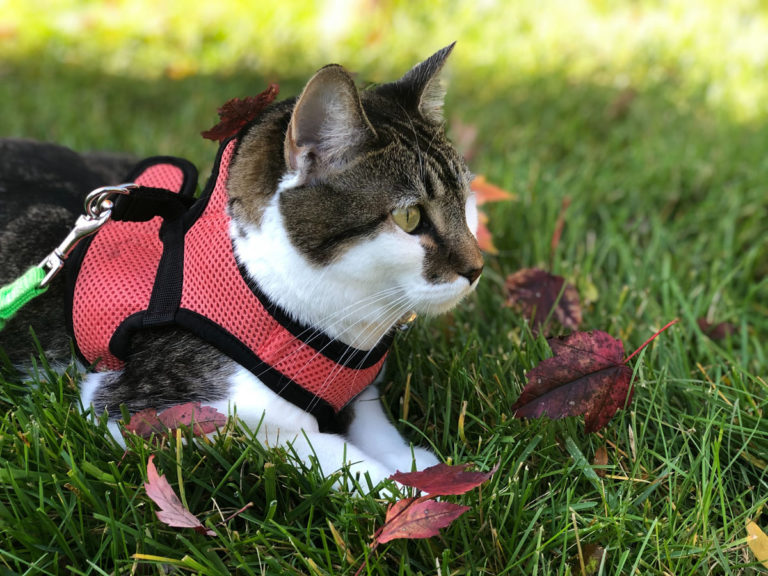
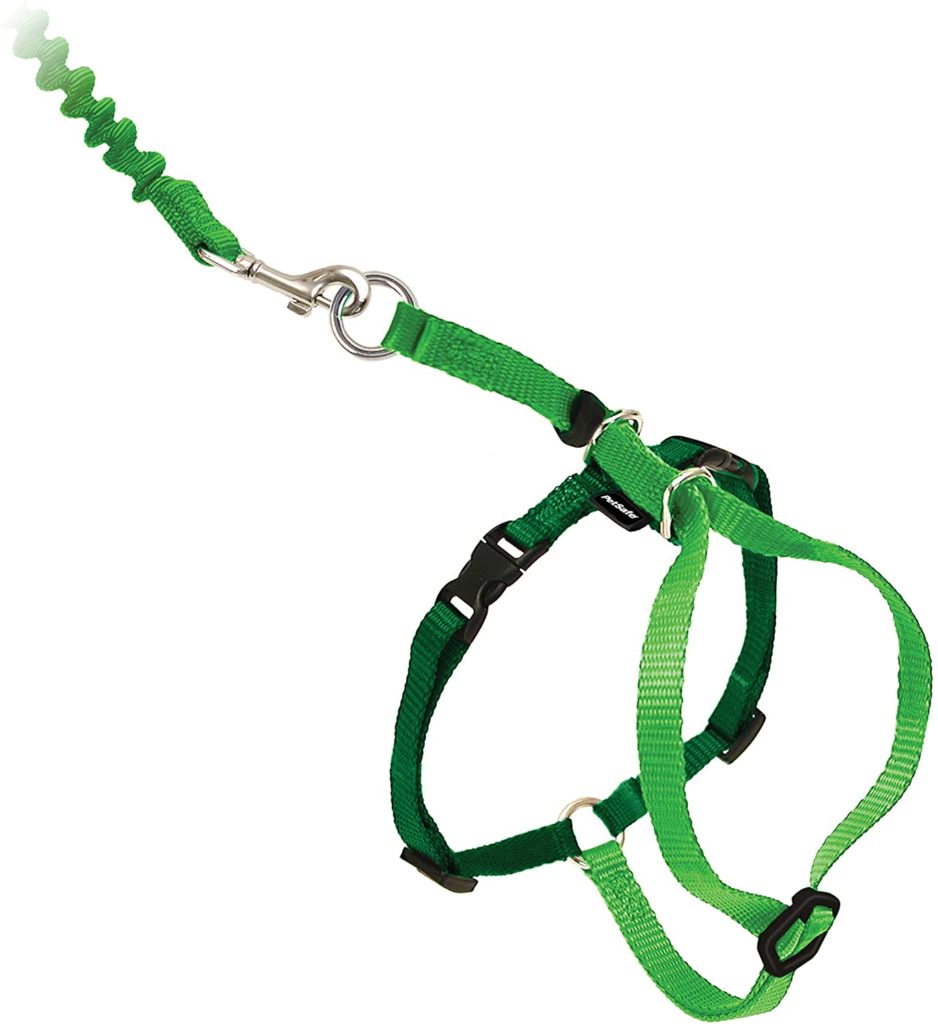
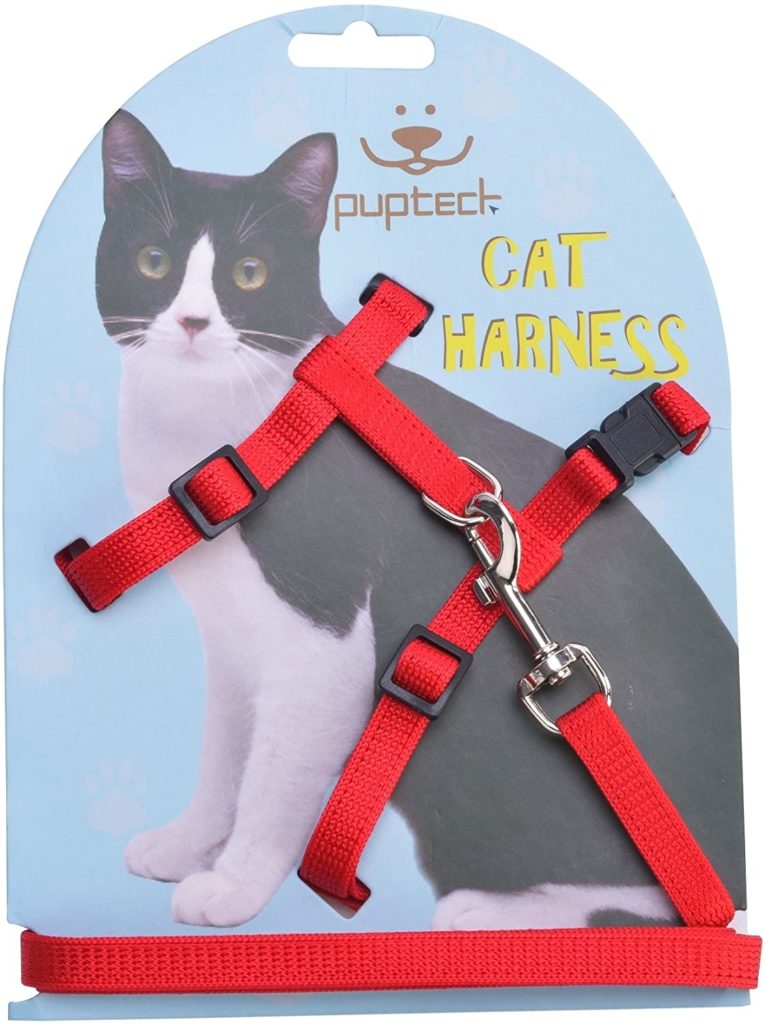

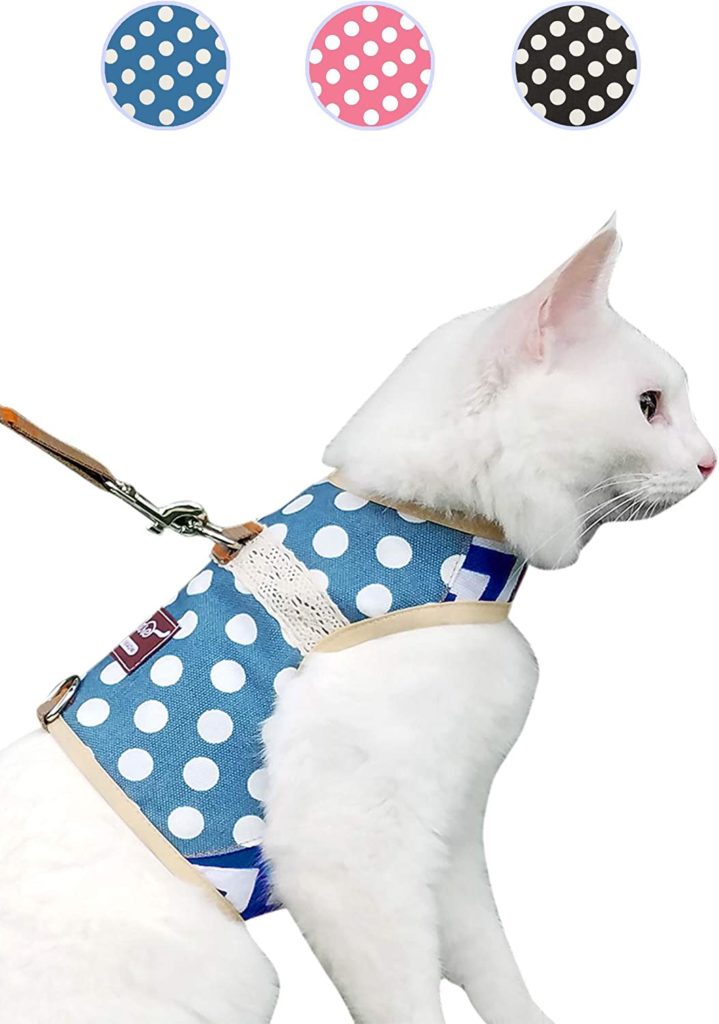
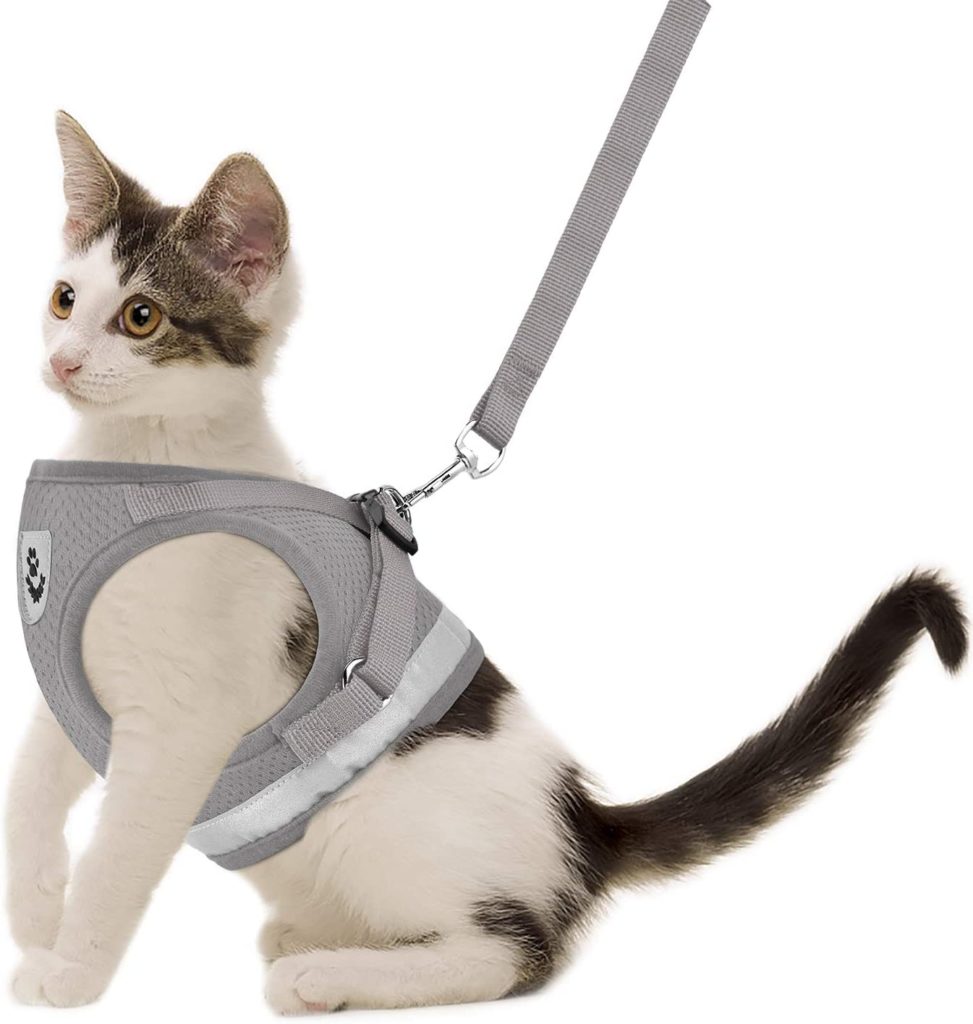
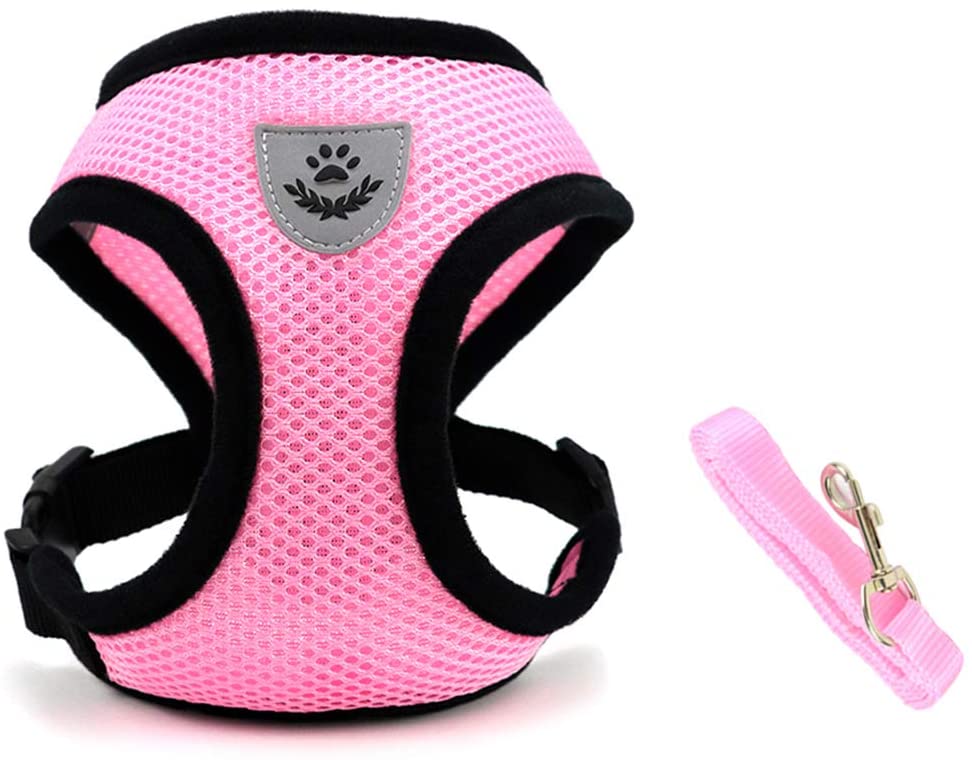
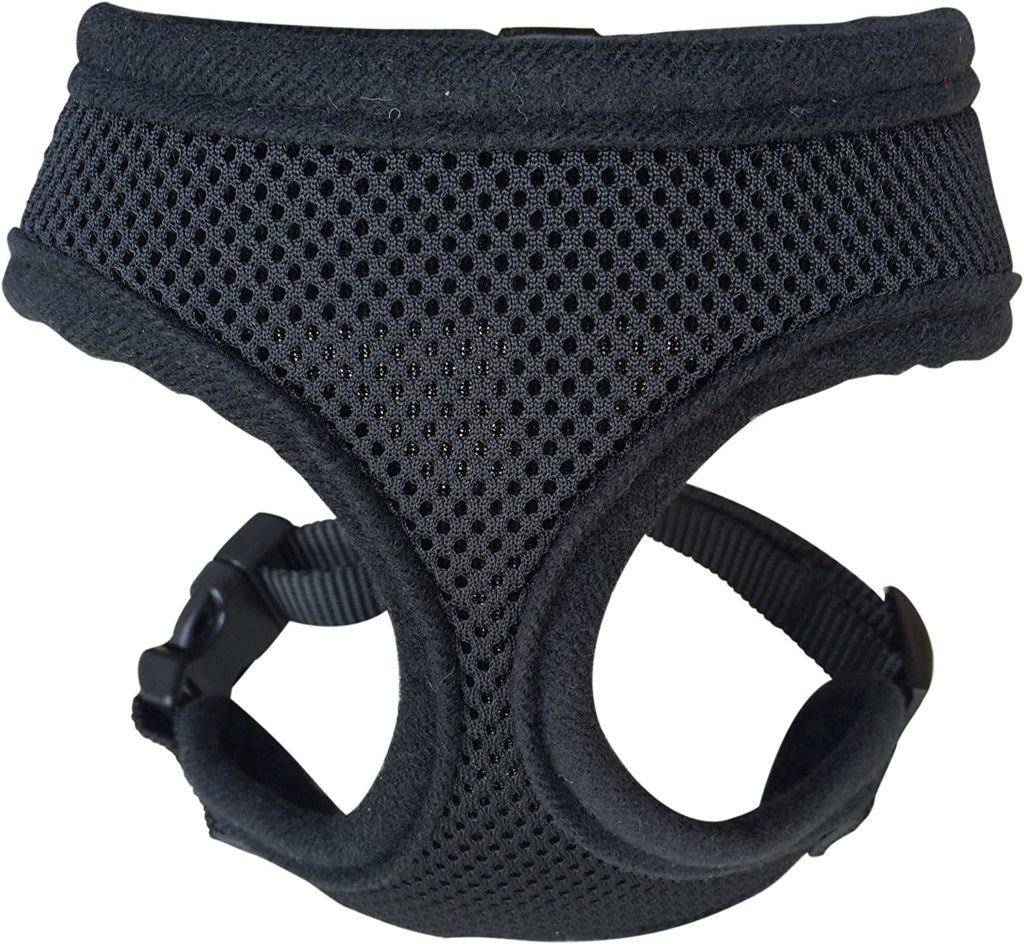
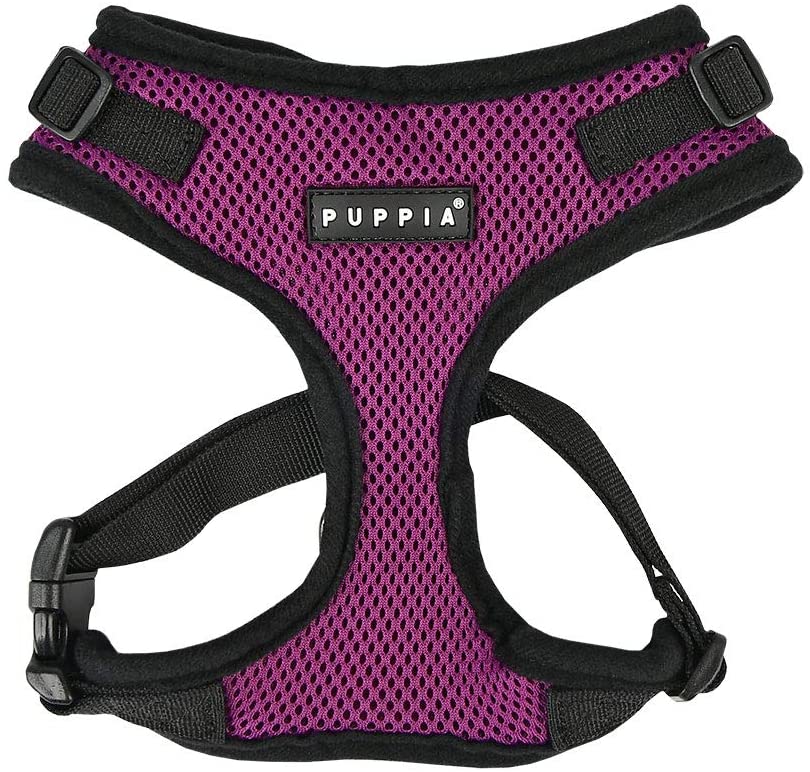
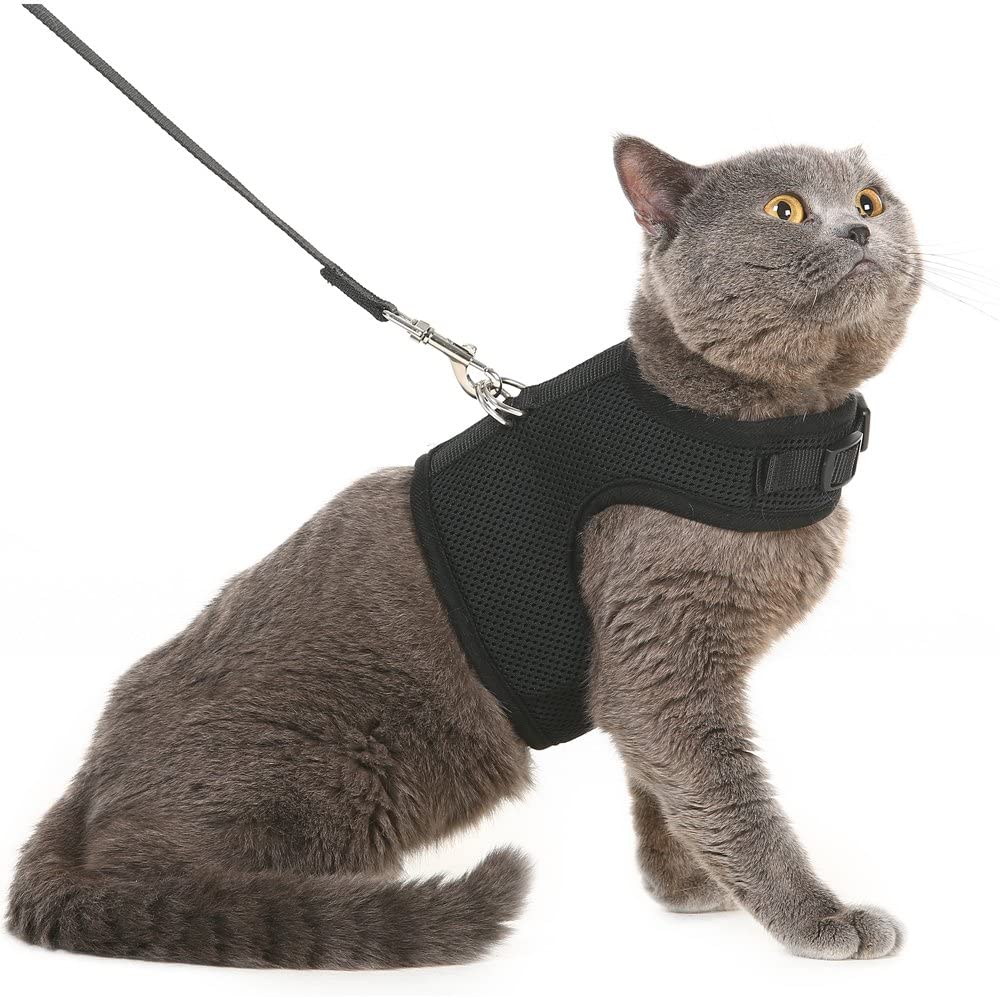
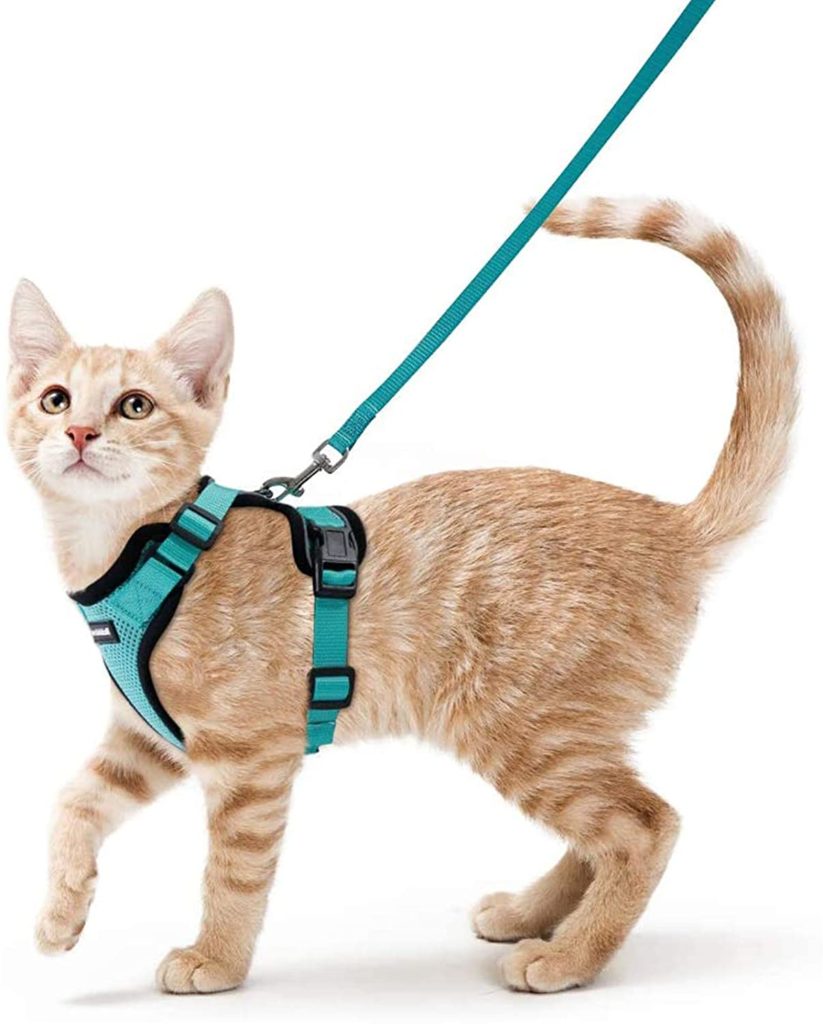
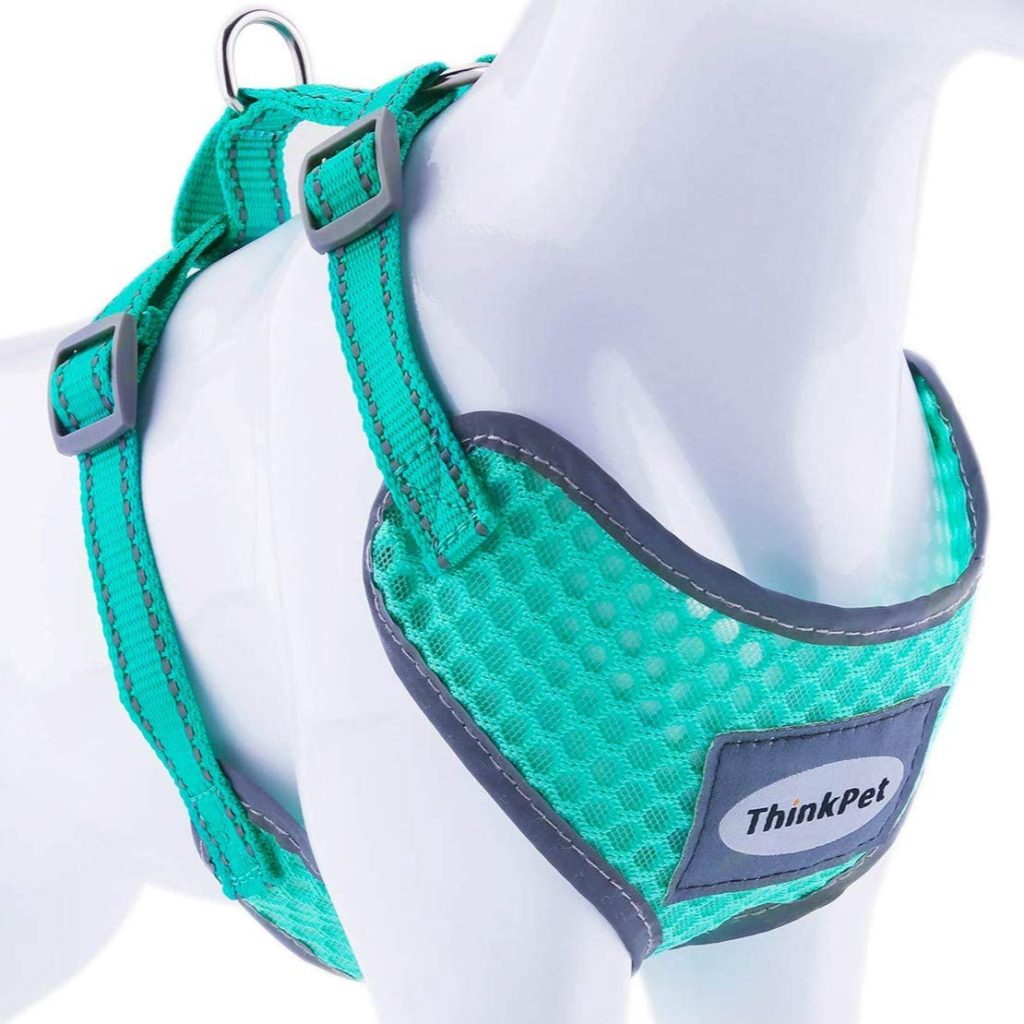



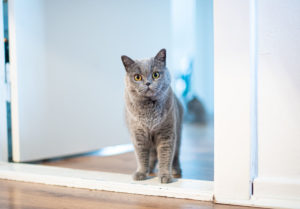

No comment yet, add your voice below!